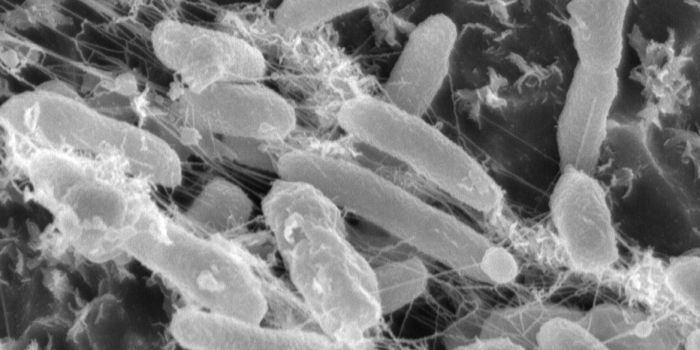Plastic-Eating Bacterium and More
In about 70 years, we created 8.3 billion metric tons of plastic, and most of it has been discarded. Now, with over 280 million metric tons produced yearly, out of which we roughly recycle 9%, it's clear that we're in big trouble. On the slightly brighter side, plastics are made of carbon-based molecules, which suggests that some organisms could be interested in digesting them. And they sure are.
In 2016, a group of scientists from the Kyoto Institute of Technology and Keio University in Japan found a new species of bacterium that breaks down and metabolizes polyethylene terephthalate (PET) which is used to make plastic bottles. It is called Ideonella sakaiensis. This bacterium can completely break down a thin layer of PET in about six weeks, but only if the temperature is held constantly at around 30°C (86 F). It does so by using two enzymes: one is excreted onto the plastic to create an intermediate chemical, which then enters the cell, where another enzyme breaks it down more, providing the bacterium with carbon and energy.
Still, the question is whether the bacterium could help us solve the problem of plastic in the ocean, and whether using bacteria would be more efficient than melting down old bottles to make new ones.
Finding the answer to that may take years, but in 2018, an international group of scientists managed to characterize the PET-digesting enzyme and, thanks to genetic engeneering, enhance its ability to break down highly crystalline PET more efficiently than the bacterium does on its own. Moreover, they found that it's also capable of breaking-down polyethylene 2,5-furandicarboxylate (PEF).
But it's not just bacteria - at least one fungus, Aspergillus tubingensis, has been found to break down plastic, and there are also plastic-eating caterpillars. However, at least one of them, the greater wax moth (Galleria mellonella) brings forward some problems. First of all, we'd need billions of these caterpillars munching on plastic all day every day, since we have so much plastic waste. The second is that they're called wax moths for a reason - their caterpillars also munch on beeswax (wax is chemically similar to polyethylene), so if we'd have billions of them eating plastic all over the world, they could also destroy bee colonies. In the United States, for instance, they already cause damage worth 4 million dollars every year. They also carry viruses and bacteria that can infect the bees. A possible solution: extract the enzymes that allow caterpillars to digest plastic, and use them on their own.
So, these findings are truly interesting, but we really need to do our best to stop polluting our planet. Nature will not fix this for us on its own.
Who's in this article?

Photo credit: Shosuke Yoshida et al.
| Scientific name: | Ideonella sakaiensis |
| Phylum: | Proteobacteria |
| Class: | Betaproteobacteria |
| Order: | Burkholderiales |
| Family: | Comamonadaceae |
| Scientific reading: |